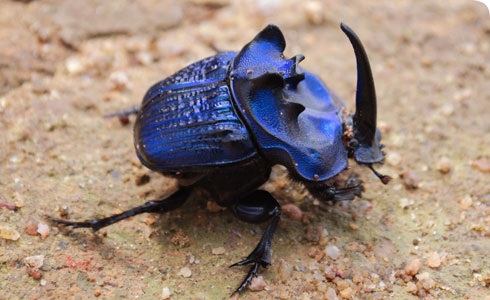Biology
The beetles are able to recognise themselves in the dim dusk light because their metallic colouration optimises the contrast of the beetles against the forest background (Théry et al 2008).
Although the brooding behaviour of Coprophanaeus lancifer remains unclear, it is likely to be similar to that of related species that have been studied.
Once a carcass has been located, the beetles work in male-female pairs to bury the animal in a burrow.
The female beetle then tears parts of the carcass using its toothed forelegs and head, and forms pear-shaped brood masses from the decomposing flesh in an underground chamber. These masses are then covered in a layer of soil for protection and a single egg is laid in each.
The larvae hatch and feed in the brood mass, which contains sufficient substrate to allow the beetle to complete its development. Coprophanaeus lancifer is immensely strong and pairs of beetles have been studied moving pig carcasses the size and weight of an adult human (Ururahy-Rodrigues et al 2008).
Although the beetles favour vertebrate carrion, they are also sometimes attracted to dung and I have even collected them in Suriname using dead millipedes as bait.
